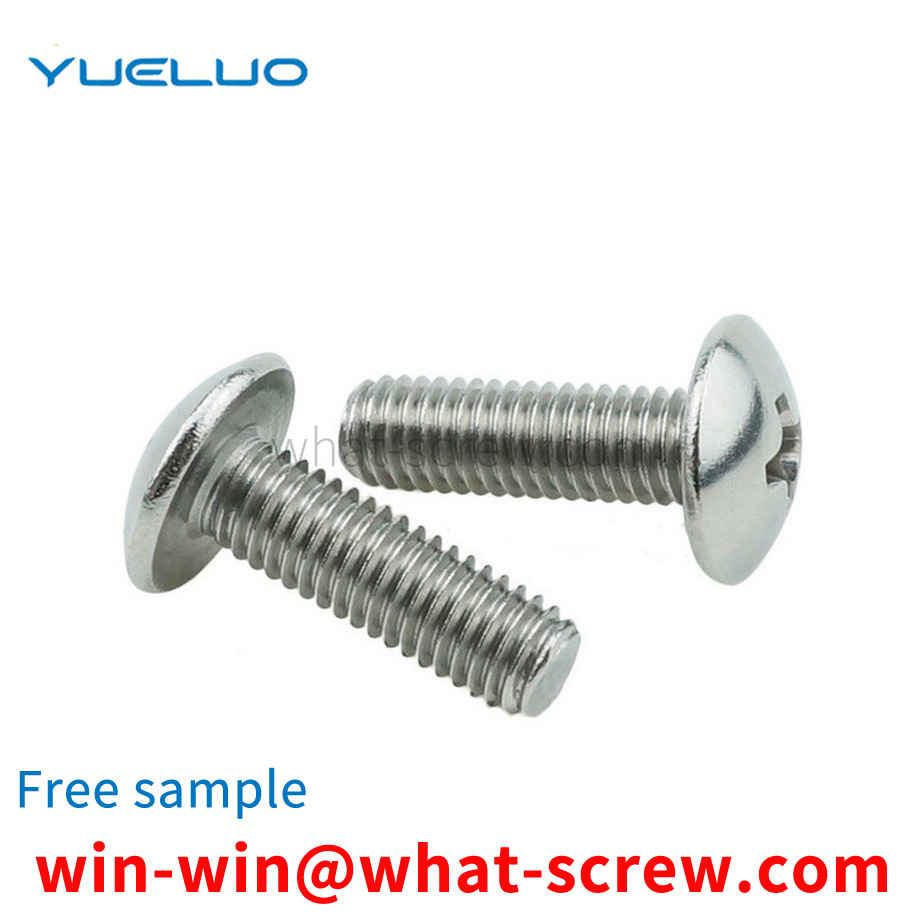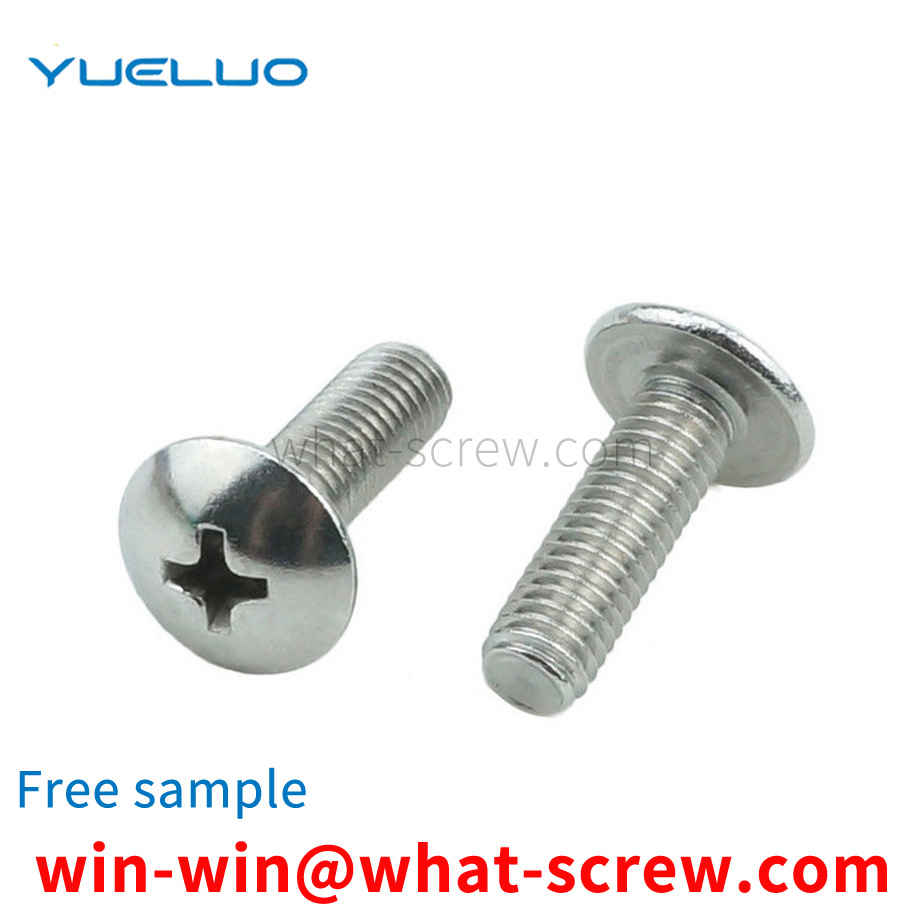The main part of the pin screw is an ordinary screw, and the pin can be arranged in the melting section of the screw or the drop groove of the metering section or the smooth cylindrical surface without screw grooves at the end of the metering section. The pins are arranged in a certain arrangement, with varying degrees of density and quantity. Cylindrical pins are formed by fitting the pins into the holes of the threaded rod; square or diamond-shaped pins are formed by milling directly on the threaded rod. If these pins are set in the melting zone, the pins can break up the solid bed, destroy the two-phase flow, stir the solid and liquid phases together, increase the contact area between the undissolved solid phase fragments and the contained material, and promote molten. If the pin is set in the melt conveying area, its main function is to divide the material flow, increase the interface, change the direction of the material flow, and rearrange the flow beam. Divide and merge multiple times, change the flow direction, and homogenize the melt composition and temperature. The mixing section is an inwardly slotted structure arranged at the end of the common screw homogenizing section, and its outer diameter is equal to the outer diameter of the screw. The grooves are divided into several groups, and each group is the confluence area of the material. The materials are divided by grooves, meet in the confluence area, and then divide and confluence. The principle is similar to the pin type. The characteristic of the separate screw is that in addition to the original screw thread (called the main screw) on the melting section, there is also an additional thread (called an additional thread) whose outer diameter is slightly smaller than the outer diameter of the main thread, and the main and auxiliary threads are With different leads, the secondary thread starts from the end of the feeding section (and connects with the feeding section here), and after several threads, gradually intersects the main thread of the homogenizing section. The screw groove depth and thread lead of this kind of screw change gradually from the beginning of the feeding section to the end of the homogenization, that is, the thread lead gradually narrows from the width, and the groove depth gradually becomes shallower from the depth, which can maximize the compression of the material.
When using screws, if you can understand the mechanical properties of screws first, then you can use screws better. Different types of screws have different mechanical properties, and the different mechanical properties lead to different occasions when screws are used. 1. Self-tapping screws: mechanical performance requirements 1. Heart hardness: standard value HRC28-38. When testing, take the section 1-2 times the diameter of the name from the tail. If the length of the name is too short, it can be embedded first, and then the hardness is measured. 2. Surface hardness: standard MIN HV450. 3. Carburized layer: standard 4#-6#: 0.05-0.18mm, 8#-12#: 0.10-0.23 mm, 14#: 0.13-0.28 mm. The main purpose of carburizing is to enhance the surface hardness and ensure the strength of the teeth. If the decarburization is too deep and the carburization is insufficient, the strength of the teeth will not meet the requirements, that is, the teeth will be damaged during the screw-in test. 4. Torque: standard specification 4#5#6#7#8#10#12#14#A tooth 14212835455696145AB tooth 142128354565102165. 5. Screw-in test: screw the self-tapping screw into a steel plate with a reserved test hole. The self-tapping screw should form a matching thread in the test plate, and the thread of the screw itself will not be deformed or damaged until the end. Tapered threads pass completely through the test plate. The screw-in test is only applicable to AB, B, BP and other types of self-tapping screws. It is stipulated in IFI that the test plate shall be prepared from semi-hard low-carbon cold-rolled steel, and the hardness of the steel plate is 70–85HRB in Rockwell. The standard specification of the steel plate, that is, the thickness, is shown in the table below. The test hole should be punched or drilled, and the tolerance is the specified nominal diameter (see the table below) ± 0.025mm. Specifications 6#7#8#10#12#1/4 Test plate thickness (mm) 1.85-1.953.12-3.234.68-4.84 Aperture (mm) ±0.0252.953.263.454.044.765.50.
self-locking nut is a nut that can self-lock by friction. The general nut will loosen itself due to vibration and other reasons during use. In order to prevent this phenomenon, the self-locking nut was invented. The main functions of self-locking nuts are anti-loose and anti-vibration. For special occasions. Its working principle is generally self-locking by friction. The types of self-locking nuts classified by function include those with nylon rings, those with neck closures, and those with metal anti-loosening devices. They are all effective torque type lock nuts (see GB/T3098.9-2002 national standard).
The shear strength of a metal material refers to the ability of the material to withstand shearing force, which refers to the strength of the external force perpendicular to the material axis and shearing the material. The test is usually to install the cylindrical pin into the specified fixture, and the gap between the supporting part and the loading part is required to be no more than 0.15mm, and then force is applied to test the shear strength of the material.
The main purpose is to make industrial products form a fixed one. In use, it often occurs that the teeth cannot be closely attached, and the screw heads are broken if they are locked too hard, or the teeth are not locked tightly and fail to meet the conditions of use, all of which are accuracy problems. . Screws are mass products, not hand-made works of art. In mass production, they are supplied to consumers in order to achieve high precision, stable quality and popular prices. The accuracy of screws is usually 6g (class 2, the American standard IFI is 2A teeth), and the rough screws used in construction projects are 8g (class 3, IFI is 1A teeth). Common types of screws Screw A: Machine Screw: Machine screw B: Tapping Screw: Self-tapping screw (for metal and plastic) B-1: Sheet Metal Tapping Screw. (Iron die self-tapping screw) B- 2: Plastic Tapping Screw. (for plastic, self-tapping screw) C: Wooden Screw : Woodworking screw D: Drywall Screw : Cement wall screw E: Self Drilling Screws (stainless steel drilling screw, composite material drilling screw) F : Expansion screw, four-piece expansion screw, also known as: four-piece gecko. The grades of expansion bolts are divided into: 45, 50, 60, 70, 80. Materials of expansion screws: mainly austenitic A1, A2, A4, 1 stainless steel plate, metal steel plate, galvanized steel plate, engineering installation. 2. Indoor and outdoor installation of metal curtain wall and metal light compartment. 3 Generally, angle steel, channel steel, iron plate and other metal materials are combined for installation. 4. Assembly engineering of car boxes, container boxes, shipbuilding, refrigeration, screw machine equipment, etc. Features: 1. Drilling and tapping, locking is completed at one time, and the bonding force is strong. 2. Save construction time and improve work efficiency. E-1:STAINLESS STEEL SELF DRILLING SCREWS E-2:Bi-Metal Self Drilling Screws Common materials of composite drilling screws a.Low Carbon Steel: carbon steel carbon steel is divided into low carbon steel, medium carbon steel, high Carbon steel and alloy steel. b. SS-304: Stainless Steel 304 and 316 belong to stainless steel c. SS-302: Stainless Steel 302: better structural toughness d. Aluminum 5052: Aluminum alloy 5052 d. Brass: Brass e. Bronze: Bronze f . UNS C11000 Copper: Antimony Copper
We have many years of experience in the production and sales of screws, nuts, flat washers, etc. The main products are: GB70.1 bolts, hexagon head thick shank screws, round iron flat washers, locking hexagon nuts and other products, we can provide you with suitable products Your fastener solution.



















 Service Hotline
Service Hotline




